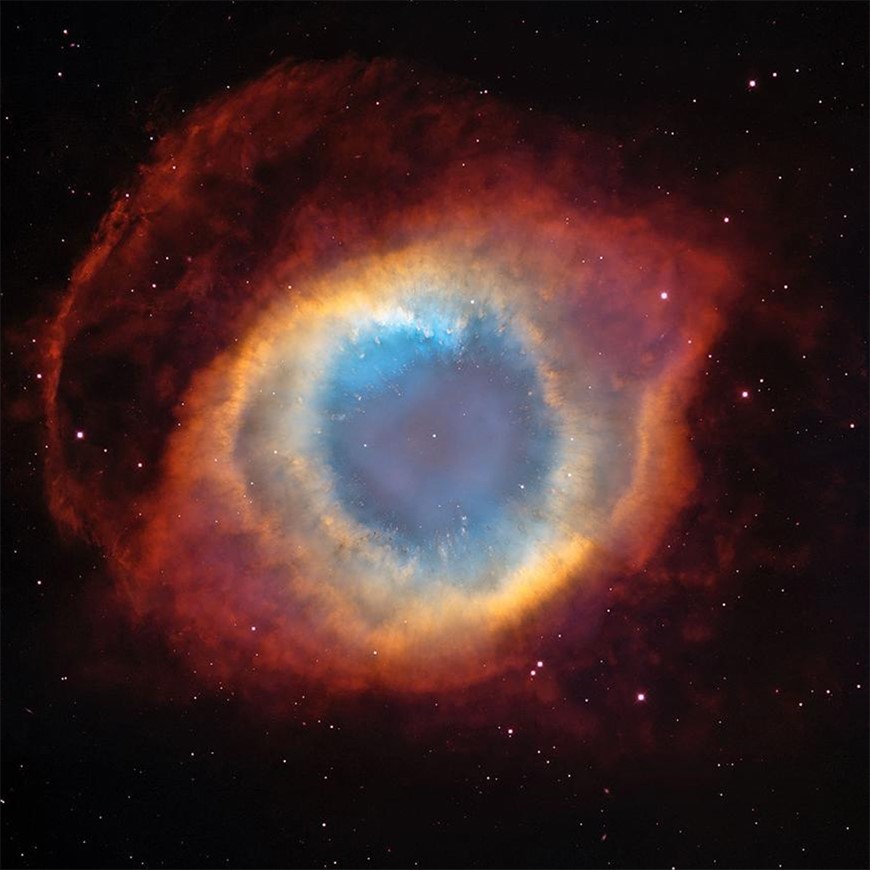Lastly, we journey 23 degrees east of NGC
7252, to rendezvous with the closest Planetary Nebula to Earth, NGC 7293 - The
Helix Nebula. Overlooked by experienced observers, such as Messier and William
Herschel, it is not difficult to understand why. Though intrinsically quite
bright at +7.59 mag, the Helix is half the diameter of the Full Moon, which
spreads its surface brightness out considerably. The Helix was eventually
discovered around 1824 by German Astronomer Karl Ludwig Harding. Observation or
the Helix requires either large binoculars and a very dark site, or a wide
field low power eyepiece and as much telescopic aperture as you can throw at
it! Large Dobs are the ideal instrument for observing the Helix, particularly
when coupled with an OIII filter. From our perspective on Earth, we see the
Helix like looking down a tube. Its prolate spheroid shape is almost aligned on
axis with us, at a distance of 650 light years. 2.5 Light years across, the
Helix appears 14.7 arc minutes across at its widest point. A magnificent
object, it will take the right conditions to see it well - if the Moon’s up, you’ll have to wait until it has set before
attempting to locate the Helix. It will be well worth the wait though.
Text: Kerin Smith Copyright Bresser UK Ltd.

 English
English
